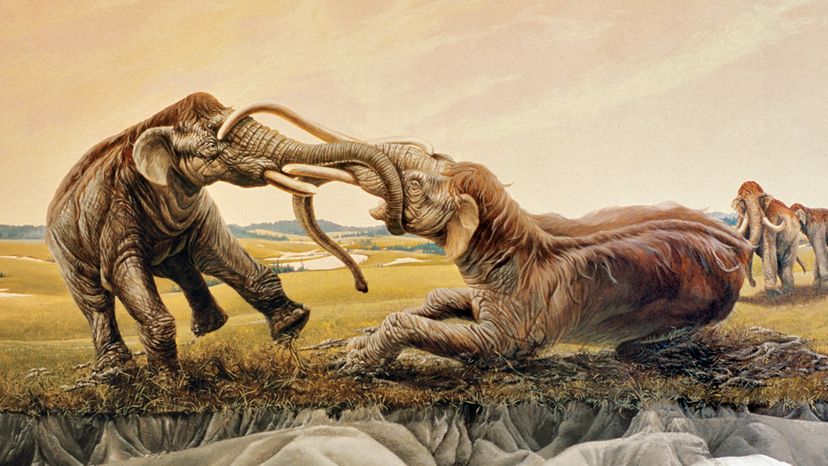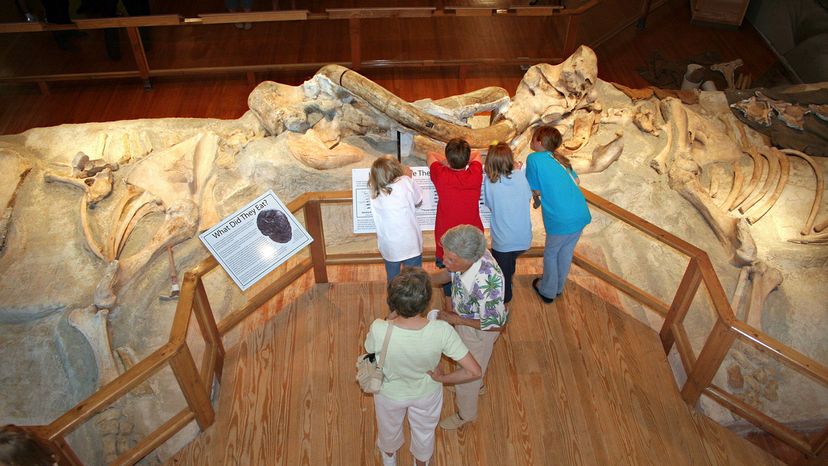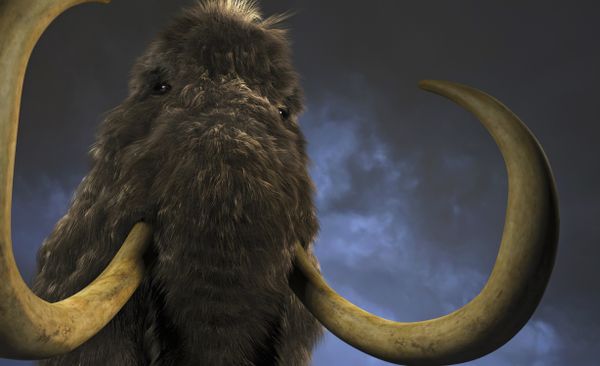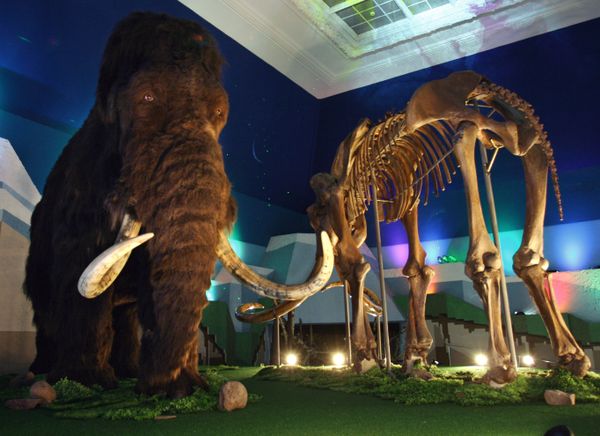
Twelve thousand years ago, there was an epic duel on the plains of western Nebraska. Both participants most likely suffered slow, painful deaths. Adding insult to injury, their bodies have been locked together face-to-face for 120 centuries and counting.
The players in this drama were two adult Columbian mammoths (Mammuthus columbi). A larger relative of the woolly mammoth, this species had long tusks and relatively little hair. By land mammal standards, the Columbian was a giant: Full-grown individuals could weigh 10 tons (9 metric tons) and stand more than 13 feet (3.9 meters) in height.
Advertisement
In 1962, land surveyors Ben Ferguson and George McMillan came across the bodies of those mammoth duelists. The two skeletons were complete and buried just north of Crawford, a city in the Nebraskan panhandle.
A team of fossil hunters from the University of Nebraska-Lincoln was quickly dispatched to recover the bones. Over a month-long period, they painstakingly removed all that was left of Benny and George — that's what they were dubbed — from the badland soil. While digging, the excavators made an astonishing discovery: The two mammoths had died with their tusks intertwined.
Daniel Fisher, a University of Michigan paleontologist who specializes in mammoths and mastodons, analyzed the tangled-up fighters in the early 2000s. Elephant tusks contain growth lines that develop at regular intervals (sort of like tree rings). By studying ivory samples from both of the dueling Nebraska mammoths, Fisher determined that they were each around 40 years old when they perished.
Male African elephants are subject to periods of intense, hormone-induced aggression at this age. Zoologists and animal caretakers call the phenomenon "musth." While experiencing musth, a male's testosterone levels may be 10 times higher than normal. Male elephants in this state are liable to fight viciously at the slightest provocation, especially if females are around.
So it seems probable that the two male Columbian mammoths were duking it out in a musth-induced rage. And they fought dirty: One of them died with a tusk tip lodged inside his rival's eye socket. Ouch.
Both animals had one short tusk and one long tusk. By hitting each other head-on at just the right angle, the weapons became permanently entangled. If the mammoths proceeded to slip and fall over, it would have been impossible for them to stand up or pull the tusks apart. Unable to move, they apparently stayed intertwined until starvation set in.
It was a tragic tale, but at least there's a nice epilogue. After spending 43 years in storage at a facility in Lincoln, Nebraska, the tangled skulls were returned to Crawford in 2005. Today, the dueling mammoths are on display at the Trailside Museum of Natural History, where nearly 10,000 people from all over the world come to visit them every year. Crawfordites are rightly proud of their one-of-a-kind fossil.

Advertisement

